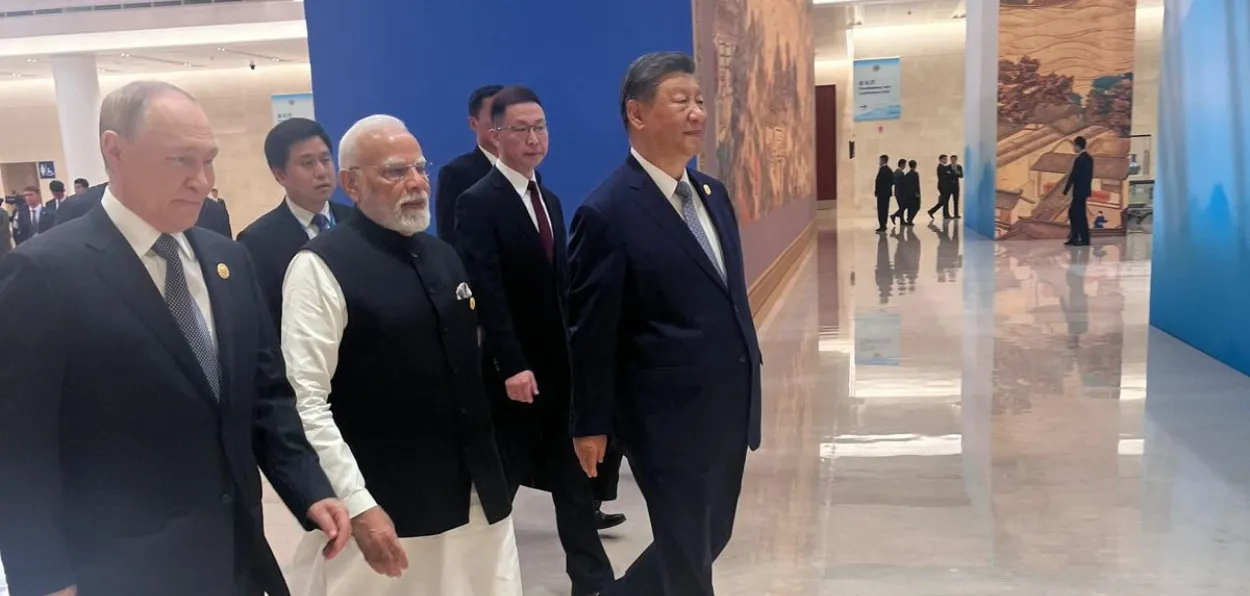
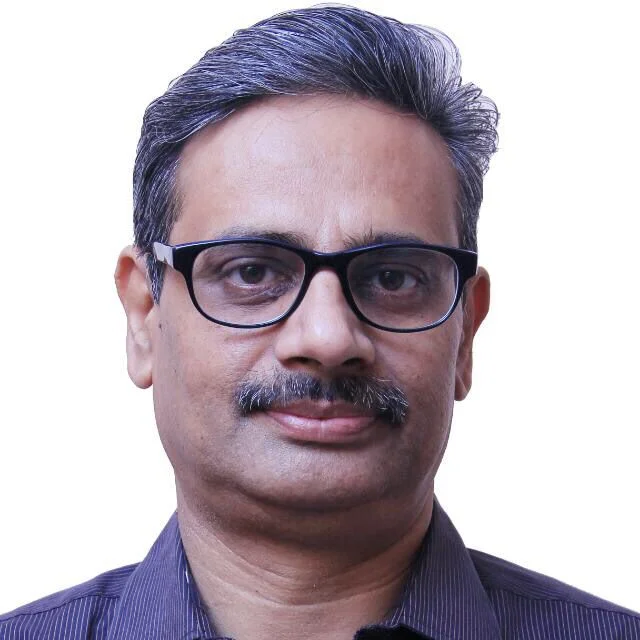 Shankar Kumar
Shankar Kumar
US President Donald Trump could hardly have imagined that India, with a single stroke of smart geopolitical game, would give him sleepless nights by drawing Tokyo, a strong ally of America in the Pacific, close to New Delhi in fashioning out a “Joint Vision for the Next Decade.” At the same time, China struck a conciliatory note, insisting that Beijing and New Delhi should foster good neighbourly ties and that “dragon and the elephant can dance together” in mutual success.
The message of defiance to Trump’s anti-India stance was clear when Prime Minister Narendra Modi, visiting China in seven years on August 31 to attend the SCO summit, shared a car ride with Russian President Vladimir Putin in Tianjin, the summit venue.
Symbolism and messaging
Coming close on the heels of the Trump administration’s punitive action against India for purchasing oil from Russia, this visual of Modi and Putin riding together in China must have sent a strong signal to Washington.
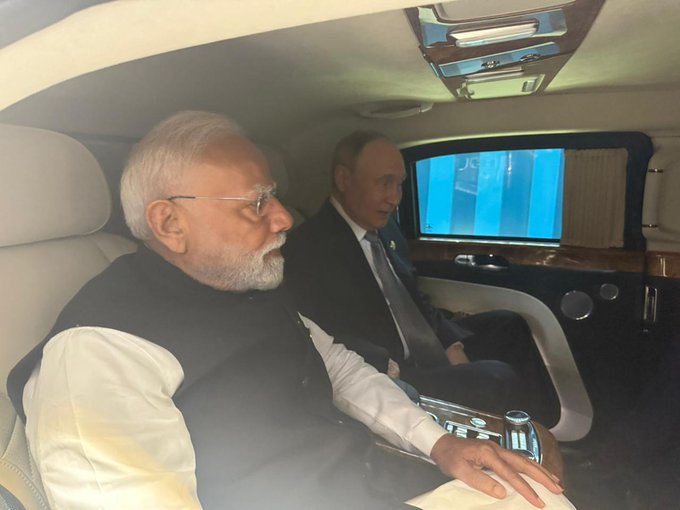
Prime Minister Narendra Modi and President Vladimit Putin speaking during in the latter's car
Rich in symbolism, it underscored that India is in no way deterred by the US’s contentious stance. Moreover, images of Prime Minister Modi, Russian President Putin, and Chinese President Xi Jinping walking together, engaging in pointed remarks, and sharing light banter, which instantly went viral on social media, further reinforced this message.
That India would remain resilient and unyielding, no matter how harsh or adversarial America’s actions might be, was the message Prime Minister Modi drove home to President Trump through his engagements in Japan and China. In China, above all, Prime Minister Modi was the poster boy of the summit, projecting visibility and confidence, while at the same time commanding a presence on the global stage.
It was unmistakably clear when Prime Minister Modi, in the presence of Pakistan Prime Minister Shehbaz Sharif at the SCO summit, raised the Pahalgam attack. He said, “This attack was not only an assault on the conscience of India, but also an open challenge to every nation, and every individual who believes in humanity.”
The Prime Minister did not stop at that alone. Instead, he asked a soul-searching question to those who support terrorism. “In such circumstances, it is natural to ask: Can the open support for terrorism by certain countries ever be acceptable to us?” The message was clearly meant for Pakistan and China.
It was also aimed at US President Donald Trump, who had a luncheon meeting with Pakistan Army Chief Field Marshal Asim Munir in the White House in June, days after Pakistani terrorists assassinated 26 people in Pahalgam.
However, not just terrorism, but India’s stand on connectivity was also not without its share of messaging. For instance, Prime Minister Modi could not resist reminding China about its contentious Belt and Road Initiative. “Connectivity that bypasses sovereignty loses both trust and meaning,” Prime Minister Modi said amid raging debates over projects like China’s BRI, which India chose to stay out of, citing issues related to territorial integrity, especially Pakistan-occupied Kashmir.
Objective of China visit
PM Modi's China visit not only reaffirmed India’s reservations but also reset New Delhi-Beijing ties and advanced their strategic engagements. For instance, during a meeting with President Xi Jinping on the sidelines of the SCO summit, Modi underlined the importance of peace and tranquility on the border for the continued development of bilateral relations.
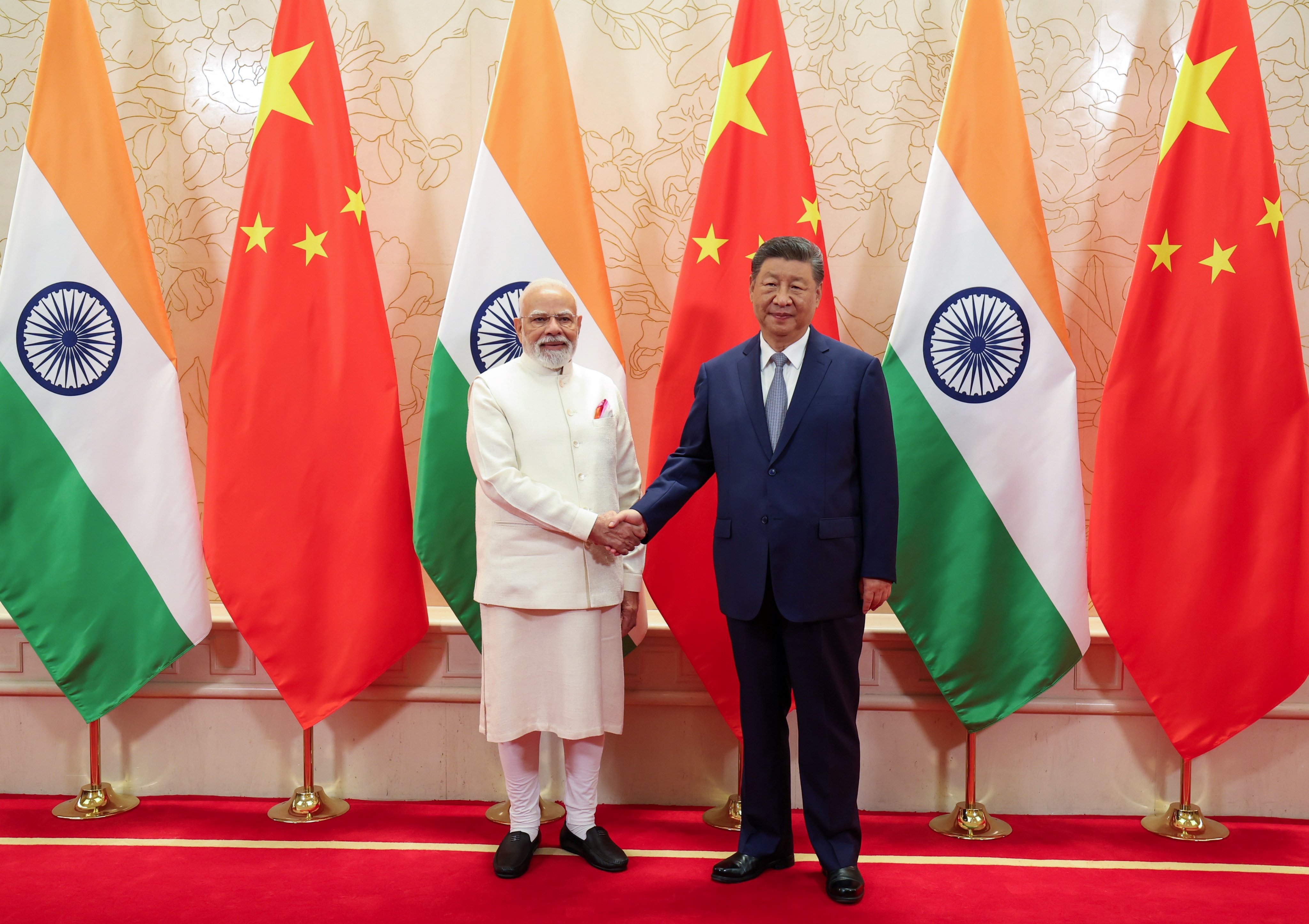
Prime Minister Narendra Modi and Chinese President Xi Jinping
Currently, 50,000 Indian troops and the same number of Chinese troops are still positioned along the Line of Actual Control. However, at the 24th Special Representative level meeting held between India’s National Security Adviser Ajit Doval and Chinese Foreign Minister Wang Yi in New Delhi last month, both sides agreed to a 10-point consensus on border management.
Both sides agreed to use the border management mechanisms at diplomatic and military levels to carry forward the process of border management, and discuss de-escalation, beginning with the principles and modalities thereof. India and China also reiterated the importance of managing border disputes through friendly consultations to promote the overall development of the India-China bilateral relationship.
Prime Minister Modi and Chinese President Xi Jinping at their meeting “positively appraised these outcomes and decisions from that round of talks. They encouraged the efforts of the SRs and agreed to accelerate the implementation of the outcomes and the understandings that have been reached between the SRs,” Foreign Secretary Vikram Misri said in his special briefing on the Indian Prime Minister’s visit to China.
At the meeting, both leaders agreed that the two countries were primarily focused on their domestic development goals, and in this pursuit, they stood as partners rather than rivals. They promised to work through their differences to benefit 2.8 billion people who live in India and China.
Objective behind Japan visit
Prime Minister Modi’s visit to Japan, the first standalone official trip to the East Asian nation in seven years for the annual summit, helped the two countries in imparting fresh dynamism and energy to their most valued and trusted partnership. It can be seen in the fact that the two leaders, Prime Minister Modi and Japanese Prime Minister Ishiba Shigeru, rolled out a “Joint Vision for the Next Decade,” envisioning a 10-year strategic roadmap in economic and functional cooperation between the two countries.
Amidst Donald Trump’s single-minded effort to hurt India by imposing 50% tariffs on its exports to the US, the India-Japan joint vision for the next decade served as a masterstroke to counterbalance the US move.
More so in the background of the fact that Japan pledged to invest 10 trillion yen ($67 billion) in India over the next decade, and agreed for strategic prioritization for economic partnership, economic security, mobility, ecological sustainability, technology and innovation, people to people and state-prefecture engagements, it clearly signalled about Japan and India’s intent to shred Trump’s theatrics.
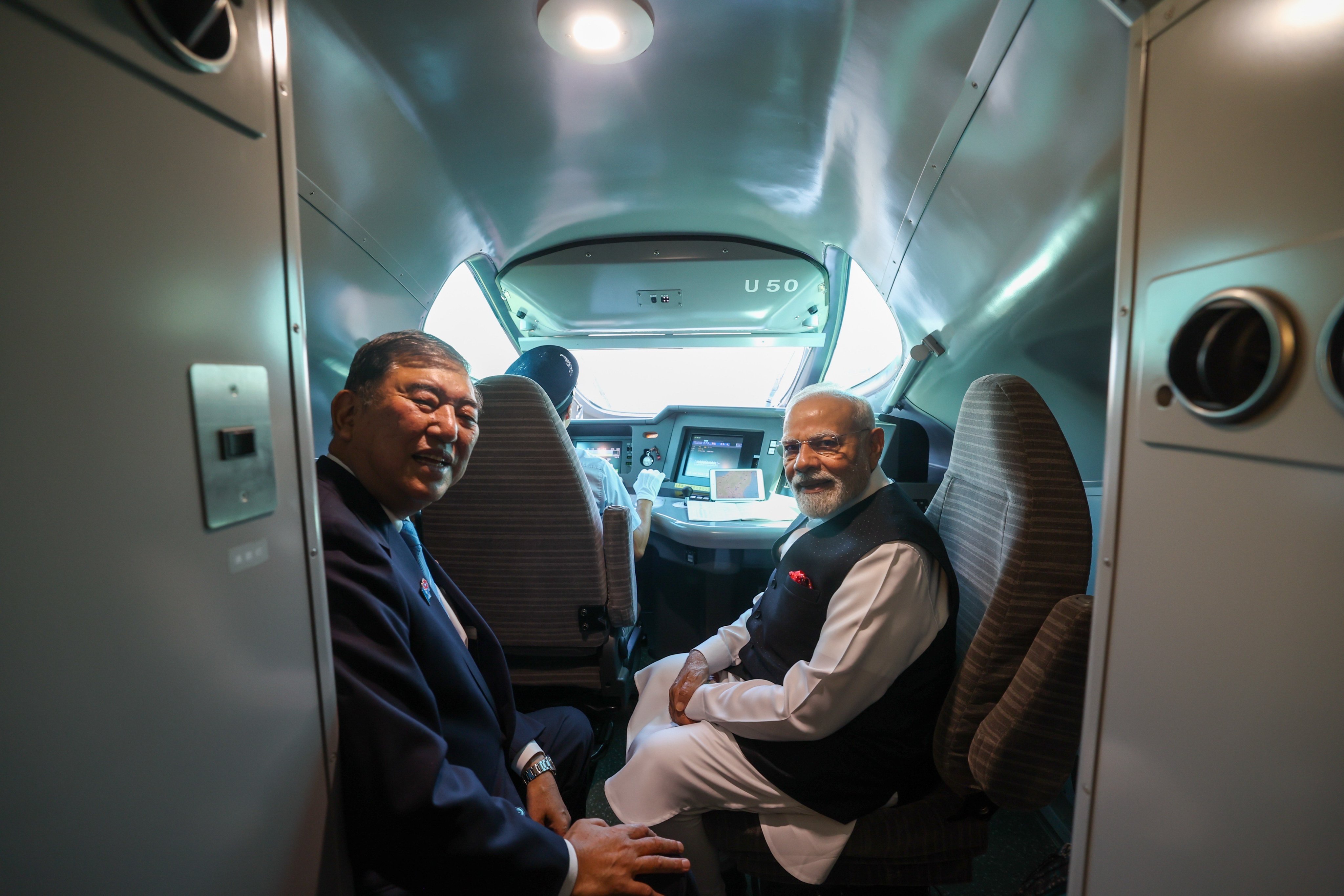
Prime Minister Narendra Modi and Japan's Prime Ministee Shigeru Ishiba travelling in a fast train to Sendai
The two countries, during Prime Minister Modi’s visit, also issued a “Joint Declaration on Security Cooperation.” According to Foreign Secretary Vikram Misri, “This is an enabling framework for India and Japan to better respond to contemporary security challenges.”
An important feature of the Joint Declaration on Security Cooperation is that it embodies a broad concept of security and it includes cooperation on cyber security, counterterrorism, defence industry, research, and development, and closer cooperation on security issues in multilateral groupings. One of the new features of the security engagement between the two countries will be an institutionalized dialogue for the first time between the national security advisors of the two countries, as well as greater engagement between the Joint Staffs of the two countries, Misri said.
The two countries also launched an “Action Plan for India-Japan Human Resource Exchange and Cooperation.” It lays out a roadmap for talent mobility and deepening people-to-people ties through exchanges of more than 500,000 personnel in five years, including 50,000 skilled personnel and potential talents from India to Japan.
The two Prime Ministers also announced the India-Japan Economic Security Initiative to provide momentum for bilateral cooperation in the field of economic security, including securing and strengthening supply chains in critical goods and sectors and accelerating cooperation in critical and emerging technologies, with heightened priority on telecommunications, pharmaceuticals, critical minerals, semiconductors, and clean energy.
Other takeaways from the India-Japan annual summit were the conclusion of a range of MoUs in sectors such as clean energy, critical minerals, digital technologies, space, cultural exchanges, environment, and diplomatic training. “The objective and the ambition of this visit has been to infuse much higher levels of aspiration and momentum into our Special Strategic and Global Partnership,” Vikram Misri said.
Modi-Putin meet
Yet, it was a meeting between Prime Minister Modi and Russian President Putin that remained the focus of the international media. Arriving together at Tianjin’s Ritz-Carlton, the venue for their bilateral meeting, in a made-in-Russia Aurus sedan, the two leaders talked about issues related to the ongoing conflict in Ukraine.
ALSO READ: What India must do to check illegal migration from Bangladesh
“We welcome all the recent efforts towards establishing peace. We hope that all parties shall proceed constructively. A way must be found to end this conflict and establish lasting peace. This is the aspiration of the entire humanity,” Prime Minister Modi said in his opening remarks during the bilateral meeting with President Putin. Held on the sidelines of the SCO summit, the two leaders also discussed bilateral cooperation, including in the economic, financial, and energy sectors.
Undeniably, through deft diplomacy in Japan and China, Prime Minister Modi underscored India’s ability to shape the global narrative on its own terms.
